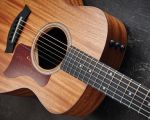Understanding How Musical Instruments Are Classified
- musical-instruments-classification-system
- four-main-categories-of-musical-instruments
- modern-classification-and-cultural-influences
- real-life-examples-and-how-to-choose
- explore-your-musical-journey
1. Musical Instruments Classification System
1.1 The Importance of Classifying Instruments
Classifying musical instruments isn’t just an academic exercise—it’s a way to understand how sounds are made, shared, and experienced across cultures. From symphony orchestras to indie bands, knowing the classification of musical instruments helps musicians, composers, and students communicate more effectively.
1.2 Hornbostel–Sachs System: The International Standard
Originally developed in the early 20th century by Erich Moritz von Hornbostel and Curt Sachs, the Hornbostel–Sachs system remains the most widely used method of musical instruments classification. It breaks down instruments into categories based on how they produce sound, such as vibrating strings or air columns.
2. The Four Main Categories of Musical Instruments
2.1 Idiophones – Instruments That Vibrate Themselves
Idiophones create sound from the material of the instrument itself vibrating—think of a xylophone or cymbals. They don’t rely on strings or membranes, making them uniquely percussive. Popular worldwide, idiophones can be found in everything from traditional African balafons to modern orchestral glockenspiels.
2.2 Membranophones – Instruments With Stretched Skins
Membranophones include drums of all kinds, from the Indian tabla to the American drum kit. They produce sound by vibrating a stretched membrane—often animal skin or synthetic material—when struck. Their rhythmic depth plays a vital role in both traditional and contemporary music.
2.3 Chordophones – String Instruments That Resonate
This category includes violins, guitars, harps, and cellos—any instrument with strings that can be plucked, bowed, or struck. A cello solo in a classical symphony or the strumming of a folk guitar both illustrate the expressive range of chordophones.
2.4 Aerophones – Instruments That Use Air
Flutes, trumpets, saxophones, and even traditional Chinese dizi are aerophones. They produce sound by causing air to vibrate within the instrument’s body. The technique varies—some require breath, others rely on reeds or mouthpieces—but their sound can be hauntingly beautiful or boldly brassy.
3. Modern Classification and Cultural Influences
3.1 Electrophones – The Newcomers
With the rise of electronic music, electrophones—like synthesizers and electric guitars—have emerged as a major group. They produce or amplify sound electronically, pushing the boundaries of traditional classification systems.
3.2 Cross-Cultural Blending of Instrument Families
Globalization has blurred the lines between traditional categories. Take the hang drum, for example—a modern invention combining idiophone and melodic characteristics. Or the hybrid sitar-guitar used in Bollywood fusion bands. These innovations highlight how musical instruments classification continues to evolve.
4. Real-Life Examples and How to Choose the Right Instrument
4.1 Personal Stories from Musicians
Jazz trumpeter Marcus shared how discovering the trumpet—a classic aerophone—changed his life as a teen in New Orleans. Meanwhile, London-based producer Emma credits her passion for electrophones to early exposure to Daft Punk's live shows. Stories like these reflect the emotional connection between artist and instrument.
4.2 Practical Tips for Beginners
When choosing an instrument, think about the sound you love, the genre you’re drawn to, and your lifestyle. Want something portable and versatile? A ukulele (chordophone) might be perfect. Love beat-driven music? Explore electronic drum pads or even a classic djembe (membranophone).
5. Explore Your Musical Journey
5.1 Learning More About Musical Instruments Classification
Whether you're a curious beginner or a seasoned performer, understanding the classification of musical instruments can deepen your musical intuition. It allows you to appreciate the craftsmanship, culture, and acoustic science behind every note.
5.2 Ready to Discover the Right Instrument?
Now that you know how musical instruments are classified, why not explore the one that fits your style? Whether you're into string instruments, digital sound, or percussion, the right instrument is out there waiting. Click here to find your perfect match and start your musical adventure today.








